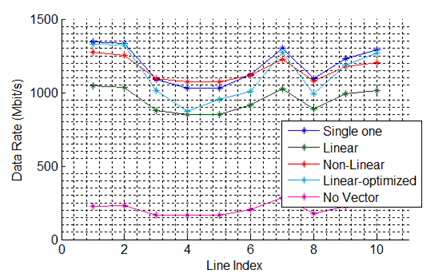December 16, 2013 report
500Mbps G.fast gets ITU first stage approval

(Phys.org) —G.fast, the 500Mbps successor to DSL and alternative to fiber has passed first stage approval from the International Telecommunication Union (ITU). The move paves the way for hardware companies to finalize equipment specifications to support the new standard. Final approval of the new standard is expected to come about as early as this April, though it's still not clear how soon customers may be able to sign up for the new service.
As the Internet has matured, applications have grown more data intensive, Ultra HD, for example, will offer 4 or 8K streaming—getting that much data in and out of homes is a monumental task and is currently being served by cable originally designed to carry just television signals or satellite systems—and the latest version of DSL, VDSL2 isn't up to the task. To that end, some have envisioned laying fiber cable to every home and/or business. But that would mean digging a trench for every site, a strategy that would be not only very expensive but would likely take more than a decade to complete. For that reason, engineers have been focusing on a way to allow for fiber-like throughput on copper cables (those used for bringing landline telephone service). The result is G.fast, a standard that calls for 1Gbps over copper cables, or more realistically, 500Mbps because G.fast, like DSL, is subject to degradation due to crosstalk.
At issue is what's known in the telecommunications business, as the last mile—the endpoints of a global data network that at some point must make their way into individual homes. Using fiber to create backbones and trunks is relatively simple because there are so few of them—extending the idea to homes would simply use far too many resources. This is what has given rise to G.fast, a standard that owes its increased throughput to operating at much higher frequencies than DSL and to improved noise cancellation techniques. The design originated in 2010 and a prototype was created the following year. Since that time company's such as Sckipio have been working to incorporate the standard into hardware in a way that will be easy for consumers to install and that will also allow for holding onto the DSL standard, making new modems backwards compatible.
While it's not clear when consumers will be able to buy both the service and the new hardware, some hardware makers have hinted that it might, for some markets, be as soon as 2015.
More information: New ITU broadband standard fast-tracks route to 1Gbit/s: www.itu.int/net/pressoffice/pr … 74.aspx#.Uq8Qw_RDtfe
© 2013 Phys.org


















